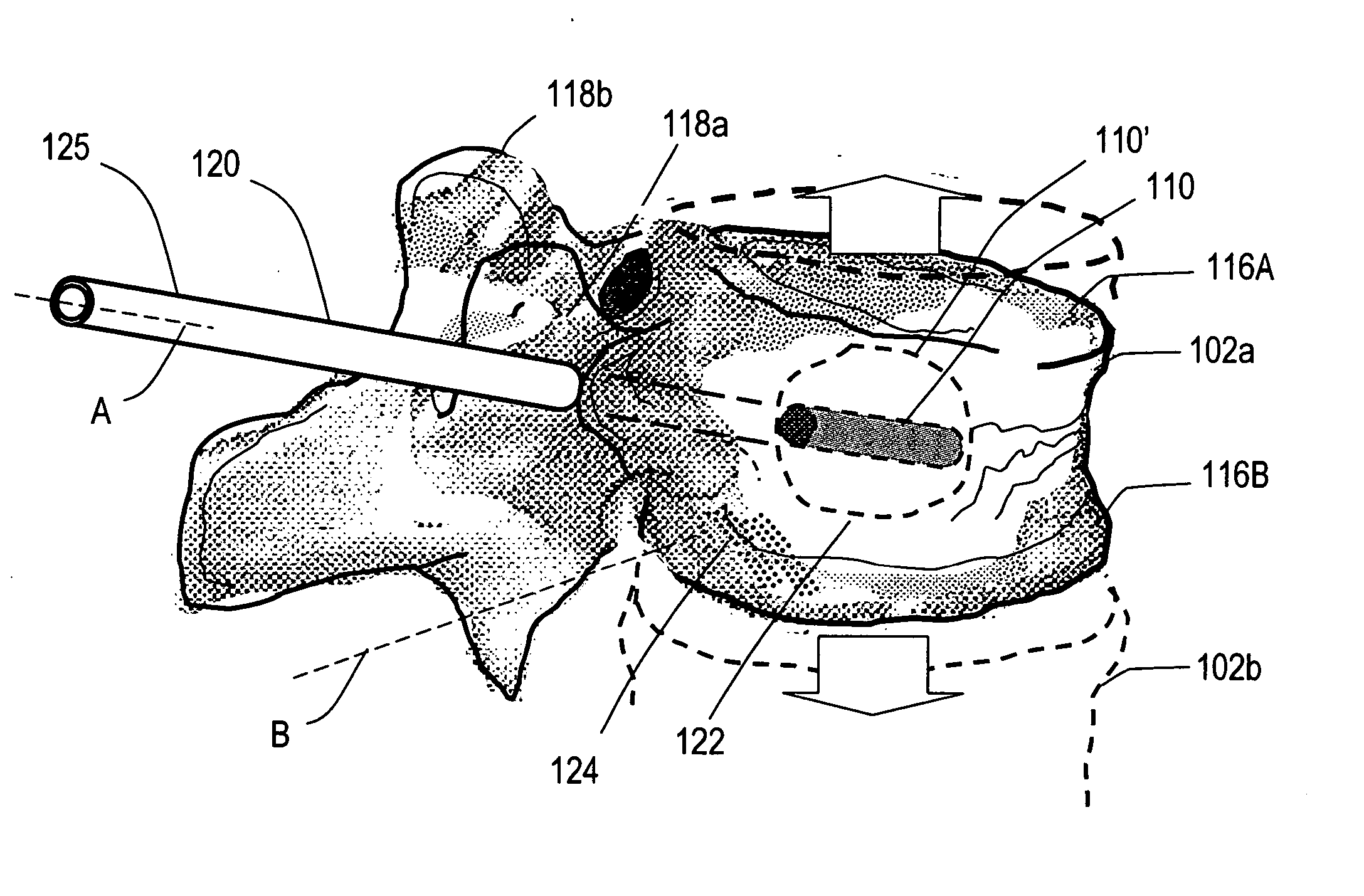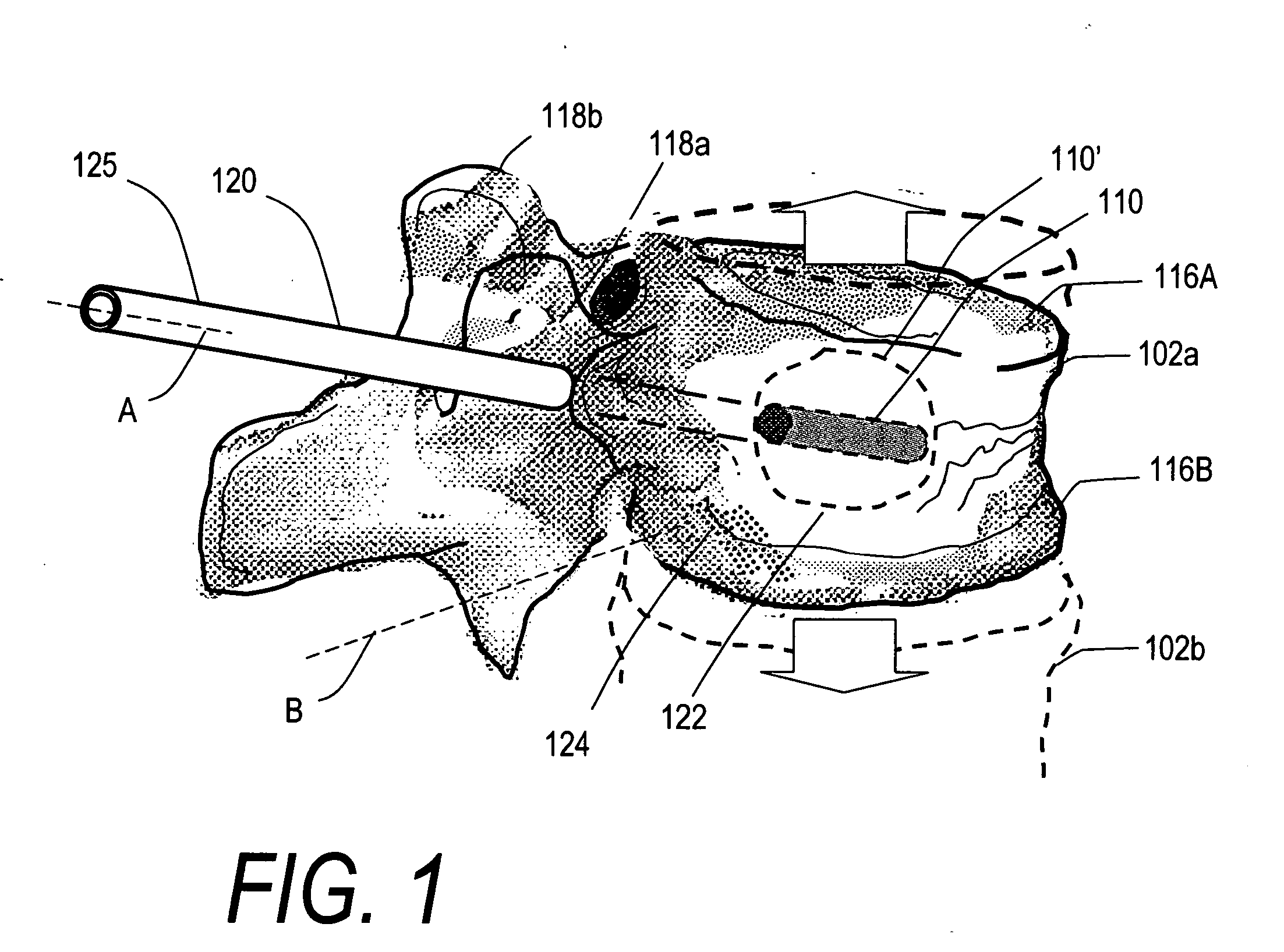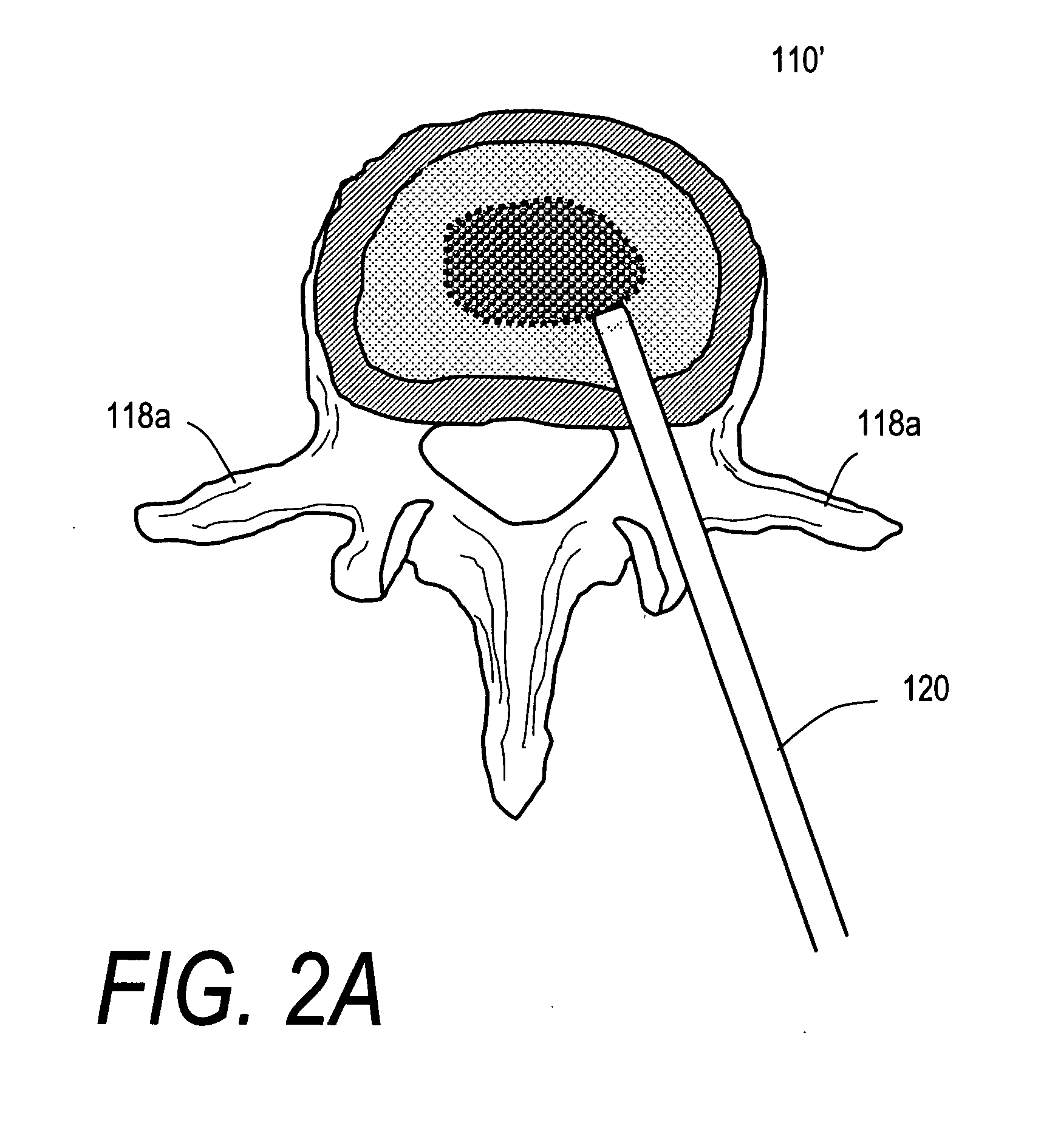Biomedical treatment systems and methods
a biomedical treatment and biomedical technology, applied in the field of biomedical treatment systems and methods, can solve the problems of fractures in the spine and hips, affecting mobility and quality of life, and the medical advances aimed at slowing or arresting bone loss from aging have not provided solutions to this problem, so as to reduce or eliminate the exothermic effect of bone cemen
- Summary
- Abstract
- Description
- Claims
- Application Information
AI Technical Summary
Benefits of technology
Problems solved by technology
Method used
Image
Examples
Embodiment Construction
[0037] In FIG. 1, it can be seen that vertebral body 102a has a “wedge” compression fracture indicated at 104 and the method of the invention is directed to elevating the vertebral body height while preserving cancellous bone for reasons described below. The implant 110 comprises a self-contained structure that can be altered in-situ from a first reduced cross-sectional configuration (110) to a second extended or expanded cross-sectional configuration (110′) to apply retraction forces to the vertebral body. The device and method include using a plurality of fast-event expansive or explosively expansive elements or bodies 115 that are either (i) introduced loosely into the targeted tissue, or (ii) carried in a confining structure that can be a mesh, knit, woven, braided, perforated, resilient, elastic or inelastic material for generally confining the elements in a selected region. The implant structure 110 can atraumatically engage and apply distraction forces to cortical endplates 1...
PUM
 Login to View More
Login to View More Abstract
Description
Claims
Application Information
 Login to View More
Login to View More - R&D
- Intellectual Property
- Life Sciences
- Materials
- Tech Scout
- Unparalleled Data Quality
- Higher Quality Content
- 60% Fewer Hallucinations
Browse by: Latest US Patents, China's latest patents, Technical Efficacy Thesaurus, Application Domain, Technology Topic, Popular Technical Reports.
© 2025 PatSnap. All rights reserved.Legal|Privacy policy|Modern Slavery Act Transparency Statement|Sitemap|About US| Contact US: help@patsnap.com



